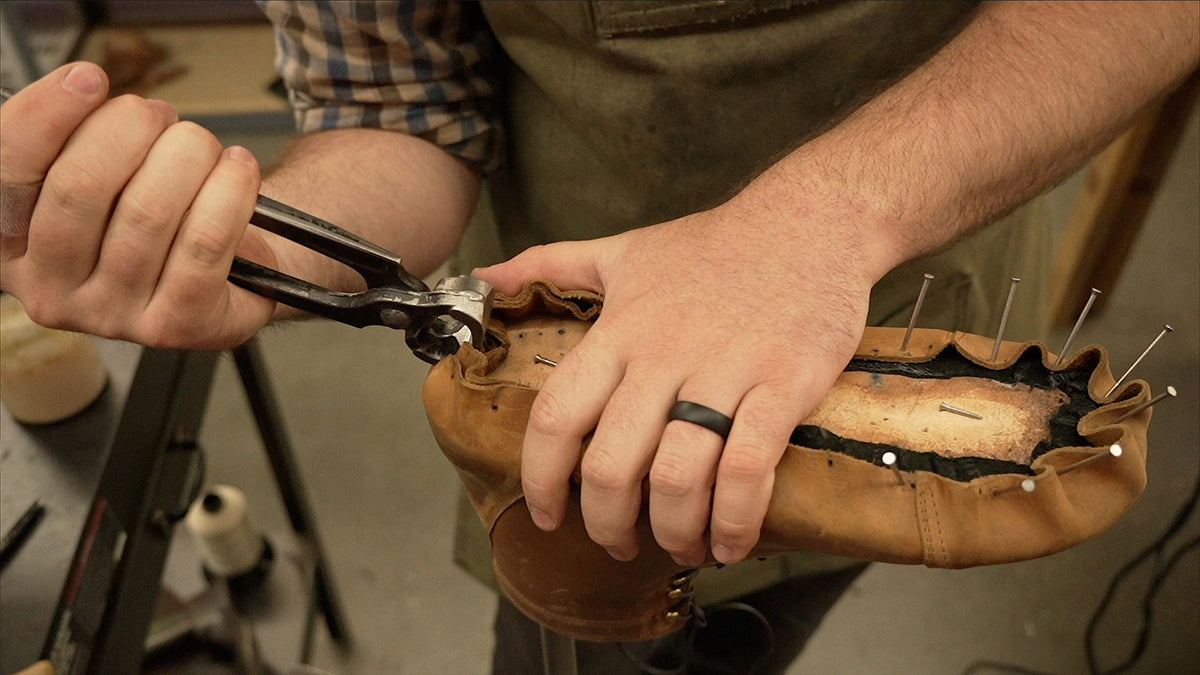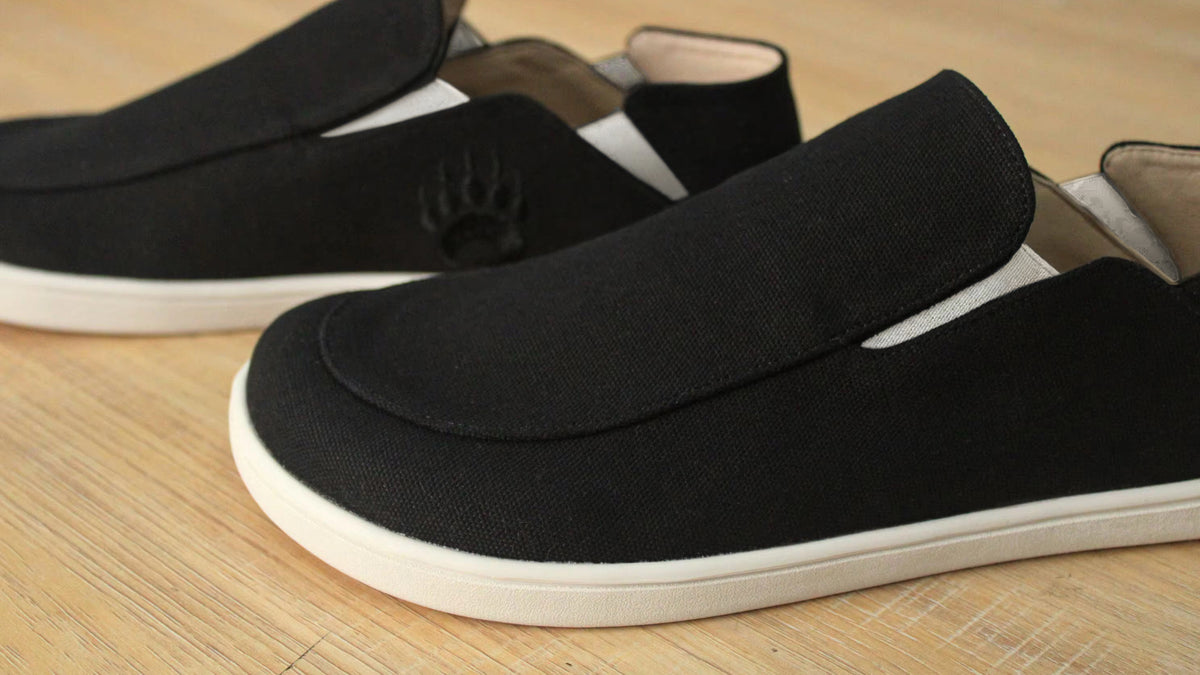Written by: John Baker and Lily Hoog-Fry
We ponder that question almost daily. How did society get shoes so wrong? The human foot looks a certain way…so just make something like it and call it a day. It should have been simple, but people are going to people, making decisions that snowball until you get the above catastrophe.
So let’s peel back this odorous onion of decisions to understand how shoes today were made to help you move better…but they severely missed the mark, inadvertently contributing to widespread foot and movement issues.
By the way, don’t take this as complete fact…its what we have been able to piece together based on conversations with associates and friends. If you have an opinion or insight. Please share it in the comments below.
Let’s start with the heel of the issue…
HOW HEELS GOT THEIR START
Ever wonder why most shoes today have an elevated heel?
Originally it wasn't to make you look taller, run faster, or move better…It was so you could ride your horse more safely! Heels were common in shoes, so your foot could fit in stirrups to better stabilize yourself as the horse gallops. This historical function highlights a key point: the elevated heel was a tool for a specific task, not a feature for general foot health or natural movement.
Ever heard of Cowboy boots?
An elevated heel is a relic still used in most modern footwear from when horses were the primary mode of transportation…and you could get lbs of candy at the convenience store for a nickel.
Shoe companies want you to believe an elevated heel helps you move better. However, like the car replaced the horse, we need to replace the elevated heel in modern shoes, recognizing its outdated and potentially harmful impact on our bodies.
An elevated heel places undue strain on the foot and ankle, causing dysfunctional movement patterns that can harm your knee, hip, and lower back. This constant imbalance forces the body to compensate, leading to a cascade of problems over time.
You were made for walking with your heel and toe on the same plane. Walking on a flat surface promotes your natural muscular development and natural movement patterns, allowing your feet to strengthen and articulate as nature intended.
So if you're not planning on riding your horse or, like most people, don’t have a horse. Then you don’t need a heel in your shoes. Opting for flat footwear aligns with your body's natural biomechanics, offering significant benefits for long-term foot and joint health.
Save the heels for when you go to the dude ranch with family or saddle up “Little Bit” to take her out on the prairie.
But let’s change clothes from the great outdoors to the great cities and see how heels and other foot function faux pas went mainstream
HOW DYSFUNCTIONAL SHOES WENT MAINSTREAM
The shoemakers messed up around the turn of the century. Instead of correcting their mistake by removing heels in shoes since most people wouldn't be riding their horses into town anymore…
They doubled down and made heels on shoes more prevalent by including them in "dress shoes"! This shift solidified the raised heel as a fashion statement, divorcing it from its original functional purpose and introducing it to a much broader population.
This design addition made heeled shoes the norm in western society for the "high class, "... which unfortunately set the era's trends. But, no doubt, this made heeled shoes more desirable and prevalent among the working class of the time, who aspired to mimic the perceived elegance and status.
Now, this isn't new…
Members of high society wore horrible and unhealthy shoes for centuries before this mistake (don't get us started on pointy shoes 🙄)
But this still begs the question...
Don't their feet hurt wearing those dysfunctional shoes all day?
To better understand how they could endure pain for status every single day. Let's imagine we lived in the early 1900s.
A raised heel and pointed toes make no sense if you're on your feet all day at your factory or farm job. Most likely, they would cause immense pain and make work more unbearable.
However, a raised heel and pointed toes make all the sense in the world if you're going to the gala to socialize for a few hours. After all, you won't need to walk around much, and plenty of seating is available. Perhaps, wealthy socialites didn't mind wearing these non-functional shoes because they weren't walking around all day, illustrating a clear divide in the impact of footwear based on lifestyle.
Something to thing about…Now back to the present.
Are dysfunctional, fashionable shoes still a status symbol?
Regrettably, yes...heels have become even higher, and designer luxury shoes are still widely popular among people who can afford them. Even modest dress shoes still have an elevated heel, rigid design, and raised toes, making them incredibly detrimental to your foot health. This continued preference for style over natural foot function highlights a persistent societal challenge.
Modern shoe manufacturers have just done a better job of balancing the extremes. Now, you can wear designer dress shoes in formal settings and cushioned slides in casual settings. After all, slides feel so good after walking around in dress shoes all day...
But more is needed to address the root cause. Your feet shouldn't hurt during the day! The recurring need for comfort after wearing fashionable footwear points to a fundamental flaw in shoe design, not a natural state of the human foot.
What if you wore shoes that didn't hurt your feet but strengthened and comforted them throughout the day? You wouldn't need to run to your slides after work because your feet wouldn't hurt. Your feet wouldn’t hurt period! Foot pain is unnatural. It’s normally not something you are born with but develops over time, often due to the cumulative effects of wearing unsupportive or poorly designed footwear.
HOW GOOD INTENTIONS LED TO BAD RESULTS
Since virtually all casual shoes had a raised heel, a peculiar trend started as people laced up their flatter running shoes during the running craze of the 1970s. Injuries started popping up left and right at an alarming rate!
How could this be? How could raised heels in casual shoes possibly be related to injuries when wearing running shoes?
We think we can help with this…
In your normal walking gait, your foot strikes the ground. Then the gastrocnemius (calf muscle) helps propel you forward into the next step. It's how you first learned to walk as an infant... and how you are designed to move barefoot.
However, when you walk around in a raised-heel shoe all day, your calf muscles become shorter and weaker. Your calves are not stretched and strengthened, which happens when you walk barefoot, leading to an adaptation that compromises natural movement.
So after walking around all day in raised heel shoes. When you try to run in flat shoes, your calves do not have the resilience or strength required to help propel you further, which can lead to injury. This illustrates how chronic use of an elevated heel can create a dependency and weaken crucial muscles, making the transition to natural movement challenging and potentially injurious.
To help resolve this issue shoe manufacturers placed a raised heel on running shoes (which were traditionally flat) to compensate for the weak calves they may have played a part in creating! This "solution" inadvertently perpetuated the cycle of muscular weakness and reliance on artificial support, moving further away from natural foot function.
But it doesn't stop there…
The new raised-heel running shoes opened people up to overstriding while walking and running. This new, longer stride would naturally require more muscular calves to propel you forward. However, shoe manufacturers came up with another ingenious idea… an elevated toe, or a "toe spring."
The toe spring allows the shoe to more easily roll from heel to toe during each step, minimizing the force the calf must generate to propel you forward. This further disengages the natural foot mechanisms, essentially doing the work your foot and calf muscles should be performing.
Wow! That makes sense… let's put a bandaid over another bandaid and call it a solution! Instead of adding an elevated heel and toe spring, what if they removed both and let the foot do what comes naturally? This would empower the foot to regain its intrinsic strength and natural biomechanics, fostering long-term health rather than temporary symptom management.
Unfortunately, creating bandaids is more lucrative than solving the root cause…If you keep using bandaids, there will always be a sales opportunity for…another bandaid!
This sad truth is something we see every day and modern shoemakers don’t appear to be changing their tune anytime soon.
However, at Bearfoot, instead of accepting the status quo or selling our band-aids…we want to address the root cause of modern society's movement maladies. Our focus is on promoting natural foot strength and optimal movement, offering a genuine alternative to shoes that hinder, rather than help, your body.
You should spend as much time barefoot as possible to improve your move.
And yes, we also sell shoes, but honestly, if you can spend all your time barefoot, never needing to wear shoes…then you don't need us. Our products are designed to complement and facilitate natural movement when going barefoot isn't an option, providing protection without compromising the foot's inherent capabilities.
Please feel free to share this with your friends or send this them video of Bearfoot Co-Founder Chris Duffin explaining this in more detail!




























